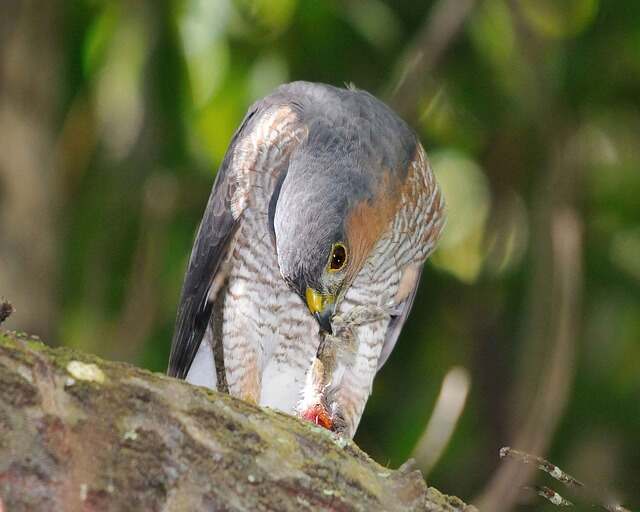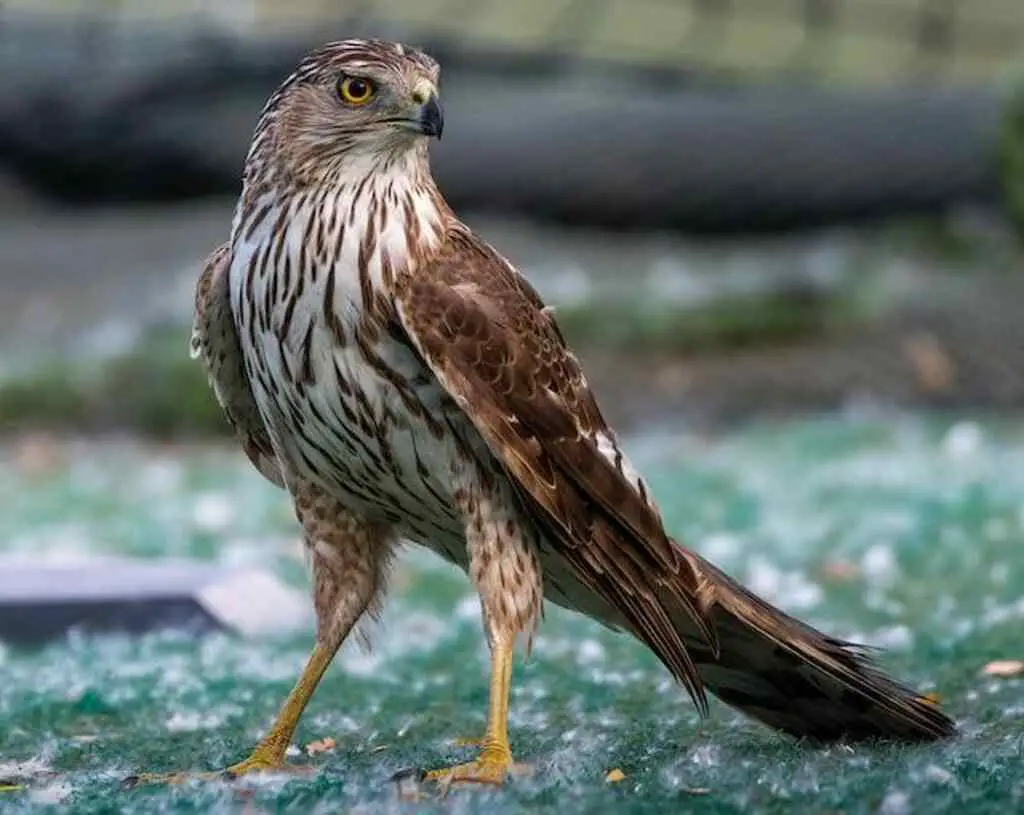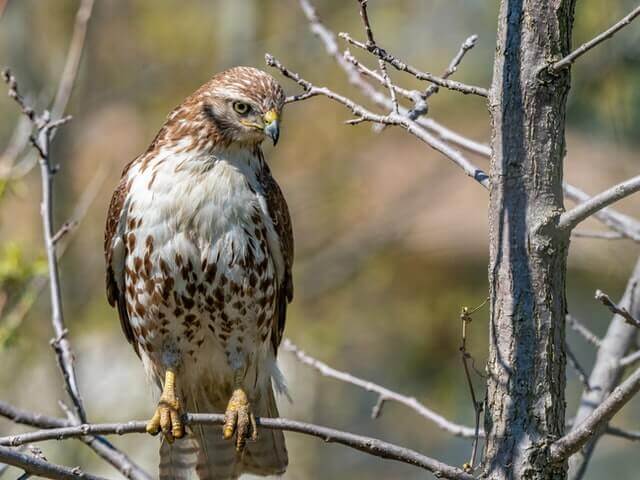Do Hawks Cough Up Pellets? Prepare to be amazed as we dive into the extraordinary world of hawk digestion!
Beyond their soaring grace, hawks have a peculiar habit that’s both intriguing and mysterious: coughing up pellets.
These regurgitated masses unveil vital clues about their diet and behavior. Join us as we unravel the secrets of hawk pellets, their formation, and their significance in understanding these majestic creatures.
Get ready to be enthralled by the wonders of the hawk’s digestive system!
Table of Contents
- 1 Key Takeaways
- 2 Do Hawks Cough Up Pellets?
- 3 What are Hawk Pellets?
- 4 The Digestive System of Hawks
- 5 The Formation of Pellets
- 6 The Importance of Pellets
- 7 How to Identify a Hawk Pellet
- 8 The Difference between Hawk and Owl Pellets
- 9 How to Collect and Study Hawk Pellets
- 10 Other Interesting Facts About Hawks
- 11 Conclusion
- 12 Frequently Asked Questions
- 13 Author
Key Takeaways
- Hawks regurgitate pellets after a meal, which are composed of indigestible prey parts.
- Pellet formation and ejection serve several purposes, including aiding digestion and providing insights into feeding ecology.
- Pellet analysis provides valuable information about food web, species interactions, and environmental contaminants.
- Collecting and studying hawk pellets is a useful method for understanding dietary habits.

Do Hawks Cough Up Pellets?
Yes, hawks do cough up pellets. Hawks, like other birds of prey, have a unique digestive system that cannot fully break down certain parts of their prey, such as bones, fur, and feathers.
These indigestible parts are formed into compact masses called pellets, which are later regurgitated.
Pellet regurgitation allows hawks to efficiently remove undigested materials from their stomachs, keeping their digestive tract clear.
What are Hawk Pellets?
Hawk pellets, also known as regurgitated pellets, are the indigestible remains of a hawk’s prey that have been compacted and expelled through the bird’s mouth.
These pellets are composed of fur, bones, feathers, and other undigested parts of the prey.
The composition of hawk pellets can vary depending on the species of hawk and the type of prey they consume.
To analyze the contents of a hawk pellet, scientists use various techniques such as microscopic examination and DNA analysis.
These methods can provide valuable information about the diet and behavior of hawks.
Understanding the composition of hawk pellets and the techniques used to analyze them can provide important insights into the ecological roles of hawks in their respective habitats.
Moving on to the digestive system of hawks, it is important to note that they have a unique mechanism for expelling indigestible parts of their prey.
The Digestive System of Hawks
The digestive tract of birds of prey, such as the genus Accipiter, consists of several specialized organs that allow for the efficient processing of prey.
These organs include the crop, proventriculus, ventriculus, and cloaca.
The crop is a sac-like structure that stores food temporarily, while the proventriculus secretes enzymes that break down the food chemically.
The ventriculus, also known as the gizzard, grinds the food mechanically with the help of small stones or grit that the bird ingests.
Finally, the cloaca is a chamber where the indigestible material is eliminated from the body.
The anatomy of hawks and their feeding behavior are closely related as the specialized organs in their digestive tract enable them to hunt and consume their prey efficiently.
The next step in the process is the formation of pellets, which is a crucial aspect of the hawk’s digestive system.

The Formation of Pellets
Through the process of regurgitation, birds of prey expel compact masses of undigested material known as casting, which are essential for their survival and have fascinated scientists and bird enthusiasts alike.
Hawks, like other birds of prey, form pellets by compressing and compacting indigestible materials such as fur, bones, feathers, and insect exoskeletons in their stomachs.
The pellet composition varies depending on the prey species consumed, and the size and frequency of pellets ejected differ among bird species and individuals.
For instance, owls have been found to produce one to three pellets per day, while hawks may produce one to two pellets per week.
The formation and ejection of pellets by birds of prey serves several purposes, including aiding digestion, reducing the weight of undigested material, and providing insights into the feeding ecology of these birds.
Understanding these processes is crucial for studying the ecology and behavior of birds of prey, and for developing conservation measures to protect these important predators.
The importance of pellets goes beyond just a curiosity for scientists and bird enthusiasts, as they are an essential part of the ecosystem and the survival of these magnificent birds.
The Importance of Pellets
The discovery and analysis of bird of prey pellets provide a fascinating glimpse into the feeding ecology of these important predators and evoke a sense of wonder and appreciation for the complexity of the natural world.
Pellets are not only important for understanding the diet of raptors but also have various uses.
Pellet analysis techniques such as dissecting and counting prey remains, measuring pellet mass and volume, and DNA analysis can provide valuable information about the food web, species interactions, and even environmental contaminants.
For example, the presence of certain prey species in pellets can indicate changes in population dynamics, while the accumulation of toxins in pellets can reflect the health of the ecosystem.
Furthermore, pellets can be used in education and outreach programs to teach students and the public about the ecological role of raptors and the importance of conservation.
Understanding the uses and analyzing the contents of pellets can provide valuable insights into the natural world.
Moving forward, it is important to learn how to identify a hawk pellet, which can be done by examining the size, shape, and texture.
How to Identify a Hawk Pellet
Can you identify the source of these small, cylindrical masses of undigested prey remains that are often found near perches or roosts?
These are hawk pellets, and they are an important tool for identifying the common prey items of these birds.
The identifying features of hawk pellets include their size, shape, and composition. They are typically about 1-2 inches long, cylindrical in shape, and made up of compressed hair, feathers, and bones.
The bones can often be identified as those of small rodents, birds, and reptiles. The feathers and hair can be used to further identify the prey species.
For example, the presence of small mammal hair may indicate that the hawk feeds on mice or voles.
Understanding the common prey items of hawks can provide valuable insight into their ecology and behavior. It can also help with conservation efforts for both the hawks and their prey.
Next, we will explore the difference between hawk and owl pellets.

The Difference between Hawk and Owl Pellets
Distinguishing between the pellets of hawks and owls can provide valuable insights into the feeding habits and ecological roles of these birds of prey.
While both hawks and owls regurgitate pellets consisting of undigested prey remains, there are notable differences in their size, shape, and composition.
Owl pellets are typically larger and more oblong in shape, with a distinct smell and a higher concentration of hair and bones.
This is due to the fact that owls tend to swallow their prey whole and then regurgitate the indigestible parts in a pellet form.
In contrast, hawk pellets are smaller and more compact, with a higher concentration of feathers and fur.
This is because hawks tend to tear their prey apart and consume only the meaty parts, leaving behind a pellet containing the indigestible remains.
Owl pellet analysis has been a popular method for studying bird of prey ecology, as it provides information on the diet and hunting behavior of these animals.
In the following section, we will discuss how to collect and study hawk pellets to gain further insights into the ecology of these birds.
How to Collect and Study Hawk Pellets
Collecting and studying hawk pellets is a useful method for understanding the dietary habits of these birds, with studies finding that a single pellet can contain remnants from several different prey items.
Analyzing the contents of hawk pellets can reveal valuable information about the species they hunt, their ecological impact, and even the health of the individual bird.
To collect hawk pellets, one can search for them in areas where hawks are known to roost or hunt, such as the bases of trees or on the ground near their nests.
Once collected, the pellets should be carefully dissected and the contents separated by prey item. This process can reveal a wealth of information about the hawk’s diet and hunting habits.
However, it is important to note that collecting hawk pellets should be done with care to avoid disturbing the birds or their nesting sites.
Overall, analyzing hawk pellets is a fascinating and informative way to learn more about these birds and their impact on the ecosystem.
Other interesting facts about hawks include their impressive eyesight and their ability to fly at high speeds.
Other Interesting Facts About Hawks
After learning about how to collect and study hawk pellets, it is interesting to explore other facts about these impressive birds of prey.
Hawks are known for their keen eyesight and are able to spot their prey from great distances.
They also have incredible hunting techniques, such as hovering in mid-air to locate prey and then diving down to catch it.
Hawks can be found in a variety of habitats, including forests, grasslands, and deserts. They are adaptable and can thrive in both rural and urban environments.
In fact, some species of hawks have even adapted to living in cities and can be found nesting on buildings and other man-made structures.
To further understand the lifestyle of hawks, a table can be used to compare and contrast different species and their unique characteristics.
The table can include information such as their size, habitat, hunting techniques, and prey.
This helps to provide a deeper understanding of how hawks have evolved to survive in different environments and how they have adapted their hunting strategies to catch a variety of prey.
As we conclude this exploration of the fascinating world of hawks, it is clear that they are truly remarkable creatures with incredible abilities and behaviors.
Through studying their pellets, habitats, and hunting techniques, we can gain a greater appreciation for these birds and the important role they play in our ecosystem.

Conclusion
Hawks, like many other birds of prey, have a unique way of getting rid of indigestible materials. They cough up pellets, which are compact masses of undigested bones, fur, feathers, and other debris.
The formation of these pellets is an essential part of the hawks’ digestive process, and they play a vital role in the ecosystem.
Collecting and studying these pellets can provide valuable insights into the diet and habits of these majestic birds.
Hawk pellets are formed in the bird’s gizzard, where the food is ground up into a paste. The indigestible materials are then compacted into a pellet and regurgitated.
These pellets can be found in a hawks’ roosting or hunting sites and are usually about the size of a golf ball. They can be identified by their cylindrical shape, texture, and the presence of bones and other debris.
In conclusion, hawk pellets are a fascinating aspect of the hawks’ digestive system. They provide a window into the diet and habits of these birds and play an essential role in the ecosystem.
Collecting and studying these pellets can be a valuable tool for researchers and enthusiasts alike. The difference between hawk and owl pellets is also worth noting, as they have distinct characteristics.
By understanding these pellets’ formation and importance, we can gain a deeper appreciation for these majestic birds of prey.
Frequently Asked Questions
What is the average lifespan of a hawk?
The average lifespan of a hawk varies depending on factors such as species, habitat, and environmental conditions. Conservation efforts, including habitat restoration and reducing human threats, can improve hawk longevity.
How do hawks mate and reproduce?
Hawks mate through a series of aerial displays and courtship rituals, such as soaring together and exchanging food. Reproductive behavior involves building nests and laying eggs, with both parents sharing incubation duties. These behaviors vary among hawk species.
What types of prey do hawks typically hunt?
Hawks typically hunt a variety of prey, including rodents and reptiles. They use hunting techniques such as dive bombing and ambush to catch their prey. This information is important for understanding the ecological role hawks play in their environment.
Can hawks be trained as pets?
Hawks cannot be kept as pets in most countries due to legal restrictions and ethical considerations. Training challenges include the bird’s natural instincts and the need for specialized care. While fascinating creatures, hawks are best admired in their natural habitat.
What are the different species of hawks found in North America?
North America is home to 25 species of hawks, each with distinct physical characteristics and geographic distributions. For example, the Red-tailed Hawk is found in every US state and has a wingspan of up to 56 inches.



